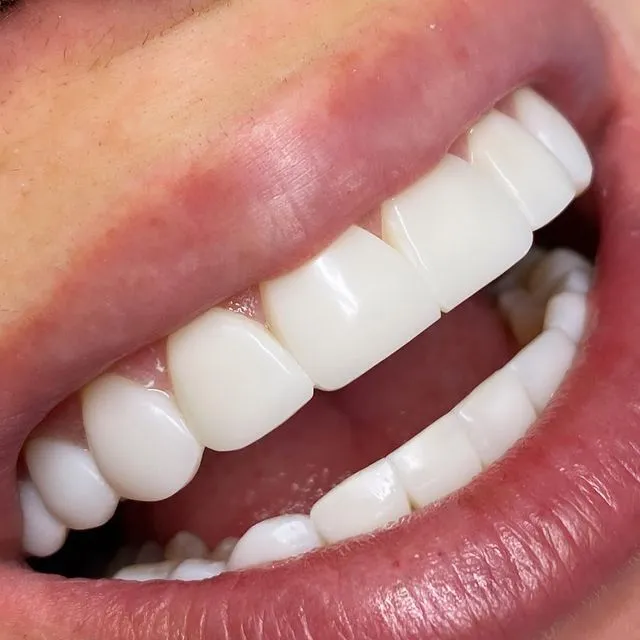Discover the key differences between composite bonding and veneers and find out which one is the best option for your dental needs.
Understanding Composite Bonding
Composite bonding is a dental procedure that involves the application of a tooth-colored resin material to the teeth. It is used to repair chipped, cracked, or discolored teeth, as well as to close gaps between teeth. The process involves roughening the surface of the tooth, applying a bonding agent, and then shaping and polishing the resin material to match the natural tooth.
Composite bonding is a more affordable option compared to veneers, as it does not require the fabrication of custom-made restorations in a dental laboratory. However, it may not be as durable as veneers and may require maintenance or replacement over time.
This procedure is usually completed in a single visit to the dentist, making it a convenient option for those looking for immediate results. It is also a reversible procedure, as the resin material can be removed if desired.
Overall, composite bonding is a good choice for minor cosmetic improvements and for individuals who are looking for a more affordable and less invasive option.
Exploring Veneers
Veneers are thin, custom-made shells made of porcelain or composite resin that are bonded to the front surface of the teeth. They are used to improve the appearance of teeth that are discolored, chipped, misaligned, or worn down.
Veneers are a more durable option compared to composite bonding and can last for 10-15 years with proper care. They are stain-resistant and can provide a natural-looking result.
The process of getting veneers involves removing a small amount of enamel from the teeth to create space for the veneers. Impressions of the teeth are taken and sent to a dental laboratory, where the veneers are fabricated. Once ready, the veneers are bonded to the teeth using a special adhesive.
Veneers are a more expensive option compared to composite bonding, as they require laboratory fabrication and customization. However, they can provide long-lasting results and are a great choice for individuals looking for a more permanent solution to their dental concerns.
Comparing Cost and Durability
When it comes to cost, composite bonding is generally more affordable than veneers. The cost of composite bonding can vary depending on the extent of the procedure and the dentist's fees. On the other hand, veneers are more expensive due to the additional laboratory costs involved in their fabrication.
In terms of durability, veneers are generally more long-lasting compared to composite bonding. With proper care, veneers can last for 10-15 years, while composite bonding may require maintenance or replacement within a few years.
It is important to consider your budget and long-term goals when deciding between composite bonding and veneers. If you are looking for a more affordable option and are willing to accept the possibility of maintenance or replacement in the future, composite bonding may be the best choice for you. However, if you are looking for a more permanent and durable solution, veneers may be worth the investment.
Considering Aesthetics
Both composite bonding and veneers can improve the aesthetics of your smile, but there are some differences to consider.
Composite bonding can be customized to match the color of your natural teeth, providing a seamless and natural-looking result. It is also a reversible procedure, as the resin material can be removed if desired.
Veneers, on the other hand, can provide a more dramatic transformation. They can change the shape, size, and color of your teeth, giving you a Hollywood-worthy smile. However, the color of veneers cannot be altered once they are bonded to the teeth, so it is important to choose a shade that matches your desired result.
Ultimately, the choice between composite bonding and veneers will depend on your personal preference and the specific aesthetic goals you have for your smile.
Assessing Dental Health and Recommendations
Before deciding on composite bonding or veneers, it is important to assess your dental health and consult with a dentist. Both procedures require a certain level of tooth structure to be present for successful bonding.
If you have significant tooth decay, gum disease, or other dental issues, these will need to be addressed before undergoing any cosmetic procedures. Your dentist will evaluate your oral health and make recommendations based on your specific needs.
In some cases, a combination of composite bonding and veneers may be recommended to achieve the desired result. Your dentist will discuss the options with you and help you make an informed decision.
Remember, maintaining good oral hygiene practices and visiting your dentist regularly are essential for the longevity of any dental restorations, whether it is composite bonding or veneers.


